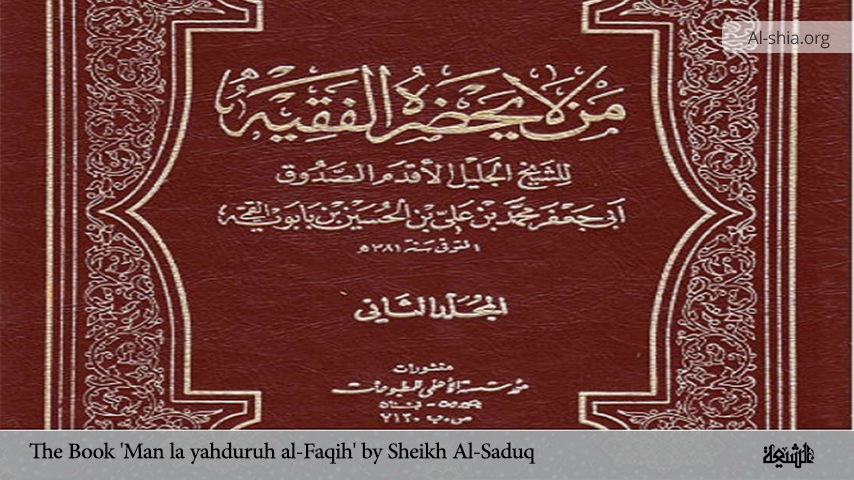Menstruation (Haidh in Arabic) is a type of blood that is discharged from the womb of a woman every month. In order to better understand haidh let us follow the eight simple steps below:
Its Verification
If the blood seen is other than what is stated below, then it is haidh.
If the blood is not of istihadha
If the blood is not of nifas (blood seen after childbirth)
If the blood is not from a boil or surgery
Its Signs
Blood seen at the time of haidh usually has its own distinctive features:
It is red color or darker, sometimes even black
It is thick
It is warm
It gushes out with force and is accompanied with burning
Its Conditions
In order to ensure that the blood seen falls into the category of haidh, the following conditions must be met:
The blood seen is not less than 3 days
The blood is seen for 3 days in a row
Continuous flow of blood for 3 days
In the beginning of the cycle (in some cases) blood is visible, later exists internally (for a few days in the vagina) and after some time it starts flowing again.
The total duration of haidh is not more than 10 days
The blood is seen by a woman who is older than 9 years according to the lunar calendar (approximately 8 ½ years solar calendar)
The blood is seen by a woman before she goes through menopause*
Between 2 cycles of menstruation, there should be at least a 10-day gap.
Note: Sayyid (Women from the progeny of the Prophet) may get their periods till the age of 60 as per the lunar calendar. Non Sayyid may get periods until the age of 50 as per the lunar calendar, as per Islamic Laws.
Categories of women
According to the rules of haidh women can be classified into six categories:
Women who have a habit of time and duration: This is a woman who sees blood at a particular date and for a fixed duration, two months in a row.
For example: A woman sees blood on the 10th of March to the 17th of March and then she sees blood on 10th of April to the 17th of April. In this case she can be classified under the category of a ‘woman with a habit of time and duration’.
Women who have a habit of duration: When a woman sees blood on different dates but the duration of the flow is the same. This happens two months in a row.
For example: A woman sees blood on the 10th of March to the 17th of March and then she sees blood on the 12th of April to the 19th of April. In this case she can be classified under the category of ‘Women who have the habit of duration’.
Women who have a habit of time: When a woman sees blood at a particular date but the duration of the discharge varies. This happens two months in a row.
For example: A woman sees blood on the 10th of March to the 17th of March and then she sees blood on 10th of April to the 18th of April. In this case she can be classified under the category of ‘Women who have a habit of time.’
Please Note: In the above examples and in other parts of the book, the Gregorian calendar has been used, as it is more familiar to the western reader. The calculations for women who have a habit of time though, require the date of the Islamic lunar calendar to be consistent.
Mudhtaribah: Disordered duration: When a woman sees blood on different dates and has no fixed duration at all.
Mubtadiyah: Beginner: One who saw blood for the first time.
Nasiyah: Forgetful: When a woman forgets her habit, which means that she has forgotten the dates and the duration.
Important Question: When a woman sees blood for 10 days, it is all considered haidh (Menses), but if she sees blood for more than 10 days, then what?
If blood is seen for more than 10 days, then she must decide which category (categories of women) she fits in and follow the rules from the ‘Rules for a woman in menses’ that follow: –
Rules for a Woman in Menses
Woman having the habit of time and duration: As was mentioned earlier this is a woman who in the last 2 months has seen blood on a particular date and for a fixed duration. When a woman under this category sees blood for 10 days then it is all haidh, but if she sees it for more than 10 days then the blood seen during the days of habit is considered part of her period and the rest is istihadha.
Some scenarios of women having a ‘Habit of Time and Duration’
Scenario 1: If a woman in the last 2 months has seen blood for 7 days but this month she sees blood for 10 days, what is her duty? In this situation she should consider all 10 days as ‘haidh’. As the flow was not more than 10 days.
Scenario 2: If a woman in the last 2 months has seen blood for 8 days (Her habit is 8 days), but this month she sees blood for 13 days, what is her duty? In this situation she should consider the first 8 days as ‘haidh’ and the 5 extra days as ‘istihadha’, because the total flow was more than 10 days. When a woman’s menses continues for more than 10 days then the blood seen during the days of her habit is haidh and the rest is istihadha.
Scenario 3: If a woman in the last 2 months has seen blood between the 10th and 18th BUT this month she saw blood from 7th to 20th, what is her duty? In this situation she should do the following:
7th to 9th……….. is istihadha
10th to 18th ….is haidh
19th to 20th ….is istihadha
Scenario 4: If a woman in the last two months has seen blood between the 10th and 18th BUT this month she saw blood between the 10th and 20th, then what is her duty? In this situation all 10 days is ‘haidh’, because the flow does not exceed 10 days. This scenario is just like scenario 1.
Woman having the habit of duration: As was mentioned earlier this is a woman who has seen blood for a fixed duration but not for a fixed time (date wise) in the past 2 months. When a woman under this category sees blood for 10 days (and it has all the signs of haidh) then it is all haidh, but if she sees it for more than 10 days then blood seen during the days of habit of duration is period and the rest is istihadha.

















